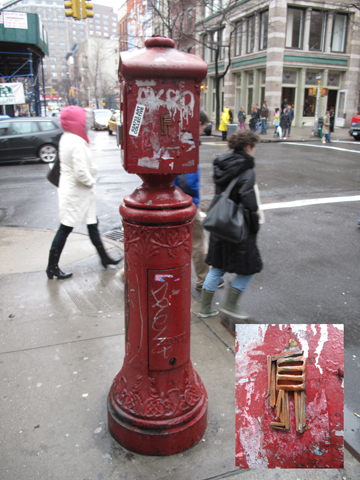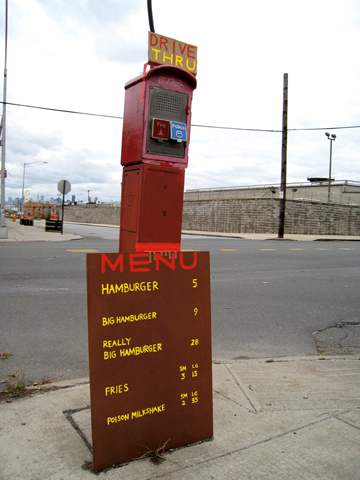
Secrets of Art Appreciation
“Some people say modern art is pretentious, but if you look at it like this…”
I am not an “art critic.” I can tell you how I feel about a given work of art, but I may feel differently over time or if I see the same work in another space. Mood is a powerful factor, and it usually takes several interactions to develop a meaningful relationship. It is indeed rare that I fall for an artwork at first sight.
I (mostly unconsciously) employ three metrics for deciding if, how, and how much I’m enjoying a work of art. The shorthand I’ve adopted to describe them is “head,” “heart,” and “gut.” Here’s a quick explanation of what they each mean to me.
Head. Is a work intellectually stimulating to me? Perhaps I’m making connections to other works of art or to knowledge I have of the time and circumstances in which the work was created. Maybe the work cleverly embodies a joke to which I know the punchline. Marcel Duchamp’s Fountain (1917) is a seminal example in modern art. If you know the story of how challenging it was to those who had to decide if it was art or not, and whether it could be included in an exhibition that claimed it would include all submitted artworks, you laugh with Duchamp and his pals. Not getting the joke is frustrating, but it doesn’t preclude an eventual appreciation of that same piece. I just still need someone to tell me the joke. I enjoy humor in art a great deal, but I’m also aware that my sense of humor is particular to me, which is one of the reasons I am not willing to call myself an art critic. However, I will happily own up to being an avid art appreciator. In this realm, as in criticism, we carry context with us. This is especially true in the following two metrics.
Heart. Do I love the work? This could be for inexplicable reasons or it could be because I have a special affinity for a subject and/or the way it’s being depicted. I happen to like tiny details. I like being seduced by a work that holds unexpected surprises. I can’t deny that if I’m attracted to the subject of the work in an erotic way, I will probably enjoy the work of art. Hiram PowersHarriet Frishmuth’s 19th-century sculptural nudes at the Met fit that category. or
Gut. This is the least explicable. It’s the electrifying, breath-taken-away frisson I get when I connect with a work of art on a gut level. I sincerely hope you’ve had this feeling. I believe that the frisson comes when my subconscious has gleaned a strong connection with the artist—a recognition that we see some part of life in the same way. I more often get this feeling in museums than anywhere else. Often, when folks walk into an art museum, they’re on their best behavior. They are trained since youth that, as in a library, there are rules. Some resist the rules and feel resentment. Some experience fear that they may inadvertently break a rule and therefore, feel anxious and out of place in museums. However, some embrace the rules, like a poet who finds that the restrictions of writing a sestina actually inspire creativity. If we let the rules put us into a “good student” state of mind, we are paying attention and “settled down.” It’s in this state that we “notice.” We’re receptive.
Head, heart, and gut are just the names I use for the most basic ways in which art affects all appreciators. Some works hit me on all three levels but this is exceedingly rare. For whatever reason, Philip Guston’s work, whether totally abstract or cartoonishly figurative, often hits me on all three. I couldn’t begin to explain the reasons why. Street art often strikes the “heart” chord because it is inherently playful. NYC has become so saturated that most overlook it, but a well-placed Stickman or D. Billy will still thrill or crack me up respectively. A clever transformation of a public space into a frame or display case for a work of art is delightful.
Donald Judd has only ever hit me on an intellectual level. The Minimalist removal of the artist’s hand from the creative process has interesting results but leaves me coldly observant, though I wouldn’t rule out “getting” Judd in a “heart” or “gut” way in the future.
In the end, it’s in museums that I’m most often hit with an unexpected gut shot. It’s in museums that a painting, sculpture, or drawing — or whatever stops me dead in my tracks — transfixes me and I get that chill. When the spell is broken and the evanescent feeling dissipates, I want to share. I want someone else to have that experience. That’s probably why I started writing about my museum excursions in the first place. I don’t expect my experience to be carried to a reader in 140 characters, but I’m pleased to be able to place a little virtual marker — a homing device — that says, “potential exhilarating experience here.”
Museum Nerd helms the popular Twitter account @museumnerd, where he tweets his art museum explorations.

